| Umělec 2006/1 >> Indie Art and the Seventies | Просмотр всех номеров | ||||||||||||
|
|||||||||||||
Indie Art and the SeventiesUmělec 2006/101.01.2006 Maja a Reuben Fowkes | study | en cs |
|||||||||||||
|
‘You could have it so much better.’
(Franz Ferdinand) There are a number of reasons for reconsidering the art of the 1970s at this particular moment. The exemplary artist Marina Abramović has just re-enacted seven key performances from the 60s and 70s at the Guggenheim Museum New York during November 2005. “Seven Easy Pieces” consisted of Bruce Nauman’s Body Pressure (1974), Vito Acconci’s Masturbation Under a False Gallery Floor in Seedbed (1972), Valie Export’s Confrontation with a Real Female Body in Action Pants, Genital Panic (1969), Gina Pane’s, The Conditioning (1973) that tested endurance of pain on a bed of burning candles, Joseph Beuys’s How to Explain Pictures to a Dead Hare (1965), as well as a re-enactment of her own performance from 1975, Lips of Thomas, in which Abramović ate a kilogram of honey and drank a litre of wine, before cutting a star in her stomach with a razor blade, whipping herself, then lying on a bed of ice. Although “Seven Easy Pieces” was justified on the basis that the original performances were ephemeral, not properly recorded or documented, and therefore left a gap in art history, it seems that there is more to it. In contrast to many of today’s performances that simulate reality, the ones that Marina Abramović chose to re-enact all engage with real life and share a readiness to question everything in the search for a truly radical transformation of art and society. This desire to revive and experience again avant-garde performances might flow from a sense that the questions raised and answers sketched in that period resonate with our current situation. The intensity of the search for the legacy of the Seventies is evident in the many actions and events that are currently taking place. In Novi Sad, the exhibition “Continuous Arts Class” directly refers to the “Public Arts Class” project that took place on the banks of the Danube in 1970 and surveys the conceptual art produced there in a period when Novi Sad was one of the leading centres of contemporary art in Yugoslavia. It aims to put the “Omitted History” on to the art historical map and relates to the Irwin initiated East Art Map project. Ekaterina Degot, one of the contributors to the East Art Map, summed up the project as to question how contemporary art would look if the leading Eastern European artists of the 1960s and 70s were integrated into general art history.i Separately, the exhibition “Open Systems: Art C.1970” at Tate Modern in summer 2005 tried to give a more open and fluid account of conceptual art, in which among the canonical Western figures, it was Sanja Iveković whose work triggered the most response from critics.ii It would be wrong though to assume that these issues are only raised in Central and Eastern Europe. In London, for example, the memory of the occupation of the Hornsey School of Art by students in 1968 has been revived by re-opening the building for participatory events and discussions in the spirit of the original art protests. So, what could be the possible reasons for our interest in the Seventies? The contemporary understanding of the role of art is changing towards a renewed autonomy of art on one side and socially and politically engaged art on the other, both through distancing themselves from the idea of art as ‘imaginative stimulation’.iii The contemporary artist as ‘alternative knowledge producer’ is involved in producing, mediating, and exchanging alternative models and dealing with issues that are marginalised in mainstream culture and politics. Not only artists, but curators and art theorists have also taken a lead in the reorientation of art to confront the global social and political context.iv If terrorism and torture, inequality and unsustainable living are the pressing questions of our time, then advertising, media, consumerism, Hollywood and Young British Art are not offering any solutions. Are we instead to look to the art of the Seventies for the key to go beyond materialism? Undoubtedly, the reawakening of concern about the threat posed by international politics and the global capitalism to nature and society has encouraged a return to the radical ideas and practices of the artistic avant-garde of the 1970s. The new artistic practice of the early 1970s brought the dematerialization of the art object, problematised the question of authorship, saw the beginnings of performance and video art, as well as the stepping out of experimental art into the public sphere. With his work Shapolsky et. al. (1971), Hans Haacke established a critical discourse on socially-oriented art. Joseph Beuys, one of the most productive and influential twentieth century artists, was winning converts across Europe through his ideas and concepts such as social sculpture and green politics. This was also the time when artists left white cubes to enter the natural landscape and conduct works in nature. Robert Smithson, with his Spiral Jetty (1970), was turned into the epitomy of the environmental artist, although arguably contemporary sustainable art criticism rejects his dominator approach to nature.v A radical questioning of art systems was evident in the conceptual exhibition of Goran Trbuljak in 1971, where he exhibited a single poster stating ‘I do not wish to show anything new or original.’ Alternative exhibition spaces were explored and independent curators appeared on the scene, while in Eastern Europe, the absence of a commercial art market provided an environment in which non-object based art could thrive. Furthermore, feminism, through its radical critique of gender relations, brought far reaching changes in artistic practice. In her performance Triangle (1979) that involved the artist being watched by the security services simulating masturbation on a balcony as Tito’s procession went by, Sanja Iveković tackled issues of gendered public space, surveillance and the subversion of power. In a recent account of her work, Marina Abramović recalls that at the end of the seventies everyone moved into painting, while she moved to the desert.vi In that sense, the primacy of paintings and saleable objects, the rule of ego-tripping celebrities and the seduction of the media industry became dominant features of the subsequent period. Could Michael Landy’s Break Down in 2001, in which he systematically destroyed all his material belongings, including paintings by fellow artists, on London’s ultimate shopping street, be seen as a turning point? While many of the protagonists of the art of the Seventies have remained in their practice truthful to their origins, younger contemporary artists also draw from and refer to that inventive period of art history. Tomo Savić Gecan’s neo-conceptualist problematisation of art spaces questions the art system, gallery structures and the fact that actions in one place may have an effect in a distant location. At the 2005 Venice Biennale, for example, he exhibited a line of text that notes how visitors to a gallery in Amsterdam might affect the temperature of a swimming pool in Estonia. At the same exhibition Boris Šincek presented a film of a performance in which a curator shoots a real gun at the artist protected by a bullet-proof vest, nevertheless showing the intensity and risk of the action. Roman Ondak’s Good Feelings in Good Times (2003) revives the aesthetic of queuing in the Socialist system transplanted to the global art market of Frieze Art Fair. Complex feelings about Soviet Socialism and the impossibility of retrieving the past motivate the work of Irina Korina. Her recent installation at the exhibition “Moscow Breakthrough” lets us only glimpse a mosaic about the heroic exploits of Yuri Gagarin over a high wall. Earlier this year, the veteran conceptualist Tamás St.Auby, recreated in Budapest a performance he first staged in 1972 called Punishment-Preventive Autotherapy. The artist sat with a metal bucket over his head and the audience were free to ask him any question they liked or could choose one from a suggested list. Participating in this revived performance gave rise to thoughts about censorship and control in art and politics, the otherness of the world and environment in which it was originally performed, and the desire to reconnect with the radical freedom and self-knowledge that was a defining feature of the art of the Seventies. www.translocal.org Notes: i Comments made during her presentation at the Courtauld Institute conference on the ‘New Russian Internationalism’, 18 November 2005. ii See, for example, James Meyer’s review of Open Systems in Art Forum in October 2005. iii Brandon Taylor, Contemporary Art, Penguin: London, 2004. iv See, for example, the catalogue of Bruno Latour’s recent exhibition at ZKM Karlsruhe, Making Things Public: Atmospheres of Democracy, ZKM and MIT Press: Karlsruhe and Cambridge, Mass., 2005. v See for example the catalogue Unframed Landscapes by Maja and Reuben Fowkes, Galerija Balen and HDLU: Zagreb, 2004, p.6. vi Marina Abramović, Charta: Milan, 2002, p. 34.
01.01.2006
Рекомендуемые статьи
|
|||||||||||||
|
04.02.2020 10:17
Letošní 50. ročník Art Basel přilákal celkem 93 000 návštěvníků a sběratelů z 80 zemí světa. 290 prémiových galerií představilo umělecká díla od počátku 20. století až po současnost. Hlavní sektor přehlídky, tradičně v prvním patře výstavního prostoru, představil 232 předních galerií z celého světa nabízející umění nejvyšší kvality. Veletrh ukázal vzestupný trend prodeje prostřednictvím galerií jak soukromým sbírkám, tak i institucím. Kromě hlavního veletrhu stály za návštěvu i ty přidružené: Volta, Liste a Photo Basel, k tomu doprovodné programy a výstavy v místních institucích, které kvalitou daleko přesahují hranice města tj. Kunsthalle Basel, Kunstmuseum, Tinguely muzeum nebo Fondation Beyeler.
|







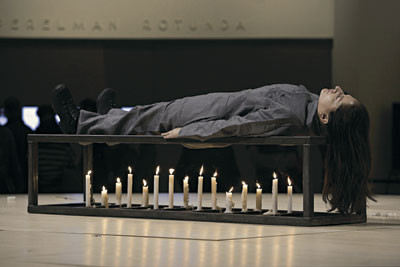
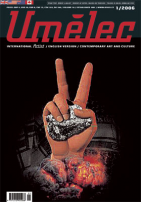



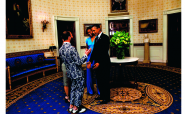


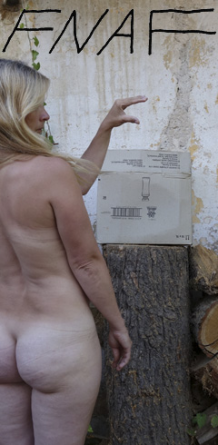






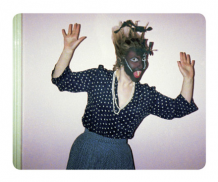





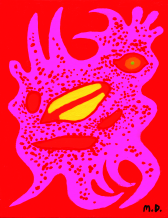

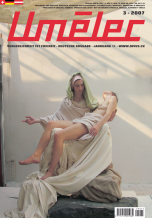


 We Are Rising National Gallery For You! Go to Kyjov by Krásná Lípa no.37.
We Are Rising National Gallery For You! Go to Kyjov by Krásná Lípa no.37.
Комментарии
Статья не была прокомментированаДобавить новый комментарий